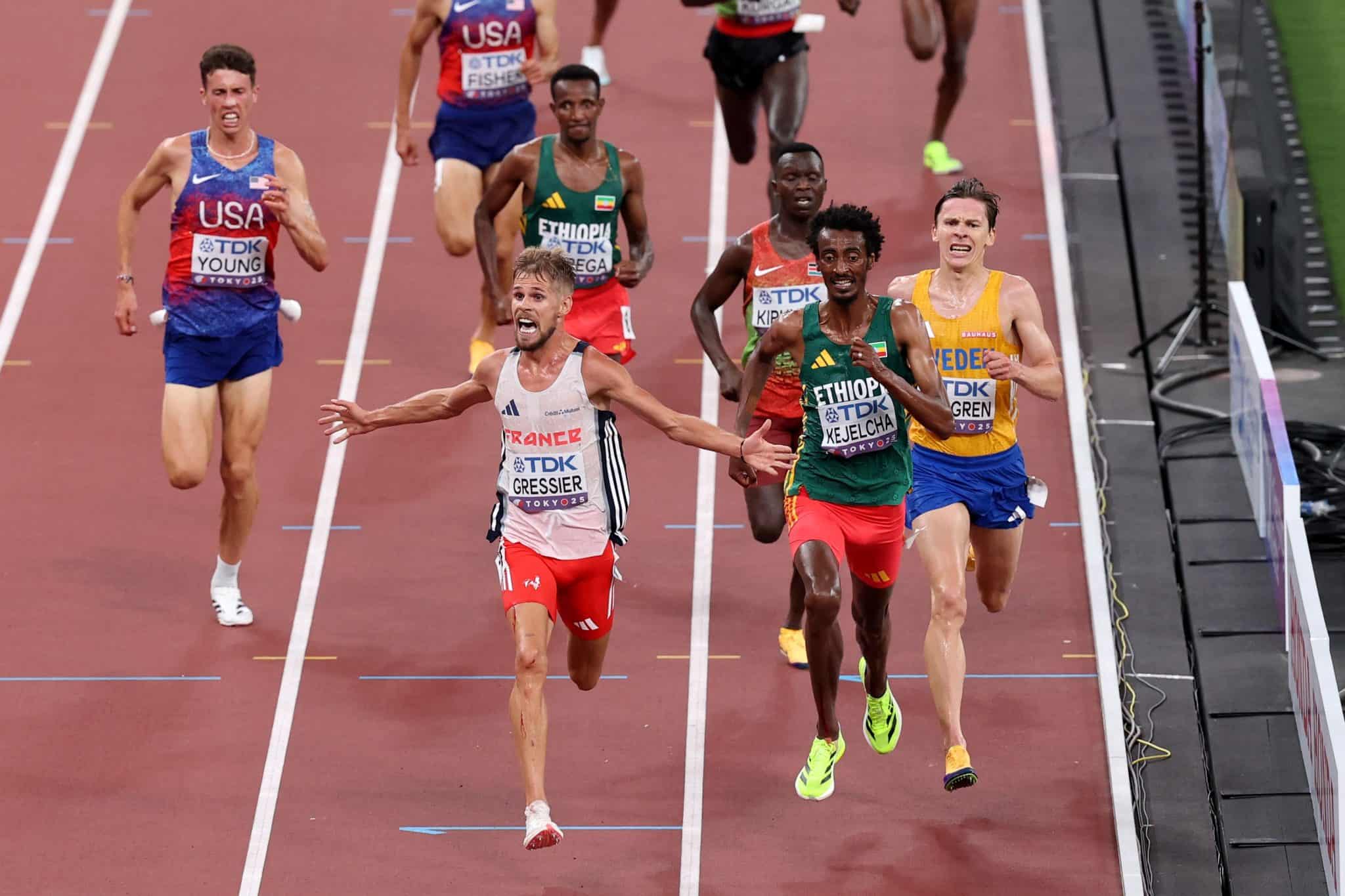Back in 1997, the International Amateur Athletic Federation (as our sport’s governing body, now World Athletics, was then known) had a problem.
Funnily enough, it involved Michael Johnson. What’s new you may ask. World Athletics has still got a problem with Michael Johnson as he strives to rescue his Grand Slam Track project and pay athletes what they are owed.

Back then, though, it was Michael Johnson the athlete, arguably the biggest name in the sport, who was the issue. Having pulled a quadriceps muscle in another ill-fated project – his fastest man in the world race against Atlanta96 Olympic 100 metres champion, Donovan Bailey, Johnson missed the US championships and, thus, selection to defend his world 400 crown in Athens.
What to do. IAAF president Primo Nebiolo was not one to stand by and see one of the biggest names in the sport sit out the world championships. The solution, a system of wild cards for defending champions. The US could honour its 1-2-3 at the trials, the world championships could have Johnson in addition to those three. Problem solved.
Johnson duly won the 400 metres in Athens, but only after a nasty scare for all concerned when he missed an automatic qualifying place in his quarter-final. He scraped through – by five thousandths of a second – as one of the fastest non-automatics.
We’ve had wild cards ever since. Mostly, the athletes eligible for a defending champion wild card don’t need it as they make their national team anyway. Like mission creep everywhere, however, the practice is expanding. Tokyo25 saw not only defending champions having a wild card to use if needed, but with the move of the championships to the concluding event of the year, winners at the Diamond League final were also granted automatic entry into the worlds.
There are some caveats. Only one athlete per nation can use a wild card. So, you can’t pick three – the maximum number of representatives in individual events – and add both a defending champion and a DL winner. Four per nation is now the upper limit.
But wild cards are back in vogue with the introduction of The Ultimate Championships in Budapest next year. Olympic and world champions will get automatic entry, as will winners of the Diamond League final which will be held in Brussels just a week before the Ultimate event.
Although there were isolated examples of athletes performing way better at this year’s DL final in Zurich than they did a few weeks later in Tokyo, for the most part the from shown in Zurich was confirmed in Tokyo – best example may be Jimmy Gressier, a surprise winner of the 3000 metres in Switzerland and an even more surprise winner (perhaps he should not have been) of the 10,000 in Japan.

Holding peak form for a few weeks is not normally a problem. But from year to year is a different thing. A deeper dive into the statistics might reveal more, but a look at how Paris24 Olympic champions performed in Tokyo might shed some light on how well the wild card system actually works.
So, how did the Paris gold medallists fare in Japan 12 months later. Well, 11 of them doubled up accounting for 12 gold medals in Tokyo (Beatrice Chebet won the 5000/10,000 double both times). Among the other Olympic champions to be crowned as world champions were Daniel Wanyonyi in the 800, Ryan Crouser in the shot put (by dint of his defending champion’s wild card; Tokyo was his first competition since Paris), Hamish Kerr and Mondo Duplantis in the men’s vertical jumps, Tara Davis-Woodhall in the women’s long, Faith Kipyegon – of course, Rai Benjamin (400 hurdles), Canadian hammer throwers Ethan Katzberg and Camryn Rogers and Valarie Allman in the women’s discus.
Further, two men and seven women went from Olympic champion to minor medallist at worlds, three more from champion to top eight and two more men – Jakob Ingebrigtsen one of them – from champion to finalist.
Pretty good, you’d have to admit. But the negative side of the ledger is pretty much the same story. Thirteen athletes – two more than those who turned Olympic gold into world gold – did not feature at all in Tokyo. Eight – including our own Nina Kennedy and three-time men’s 10,000 champion Joshua Cheptegei, did not get there at all. Three who did – including 1500 champ Cole Hocker (disqualified in the semis), and local hero Haruka Kitaguchi in the javelin – failed to even make the final a year later. Nafi Thiam did not complete the heptathlon.
Going on this very limited sample, then, it seems that the chances of an Olympic or world champion one year performing at or near the same level the next year are no better than 50-50. So, are they worthy of an automatic place in an event like The Ultimate Championships especially given most of them are going to qualify by world ranking anyway.
But if it comes down to it, is an athlete who qualified for a wild card 12 or even 24 months prior a better bet to take a place ahead of the next best in the current rankings. The Paris to Tokyo transition would suggest that’s no better than a 50-50 chance.
Wild card? Hopeful guess? Or a bit of both?